Nagoya: Long Journey
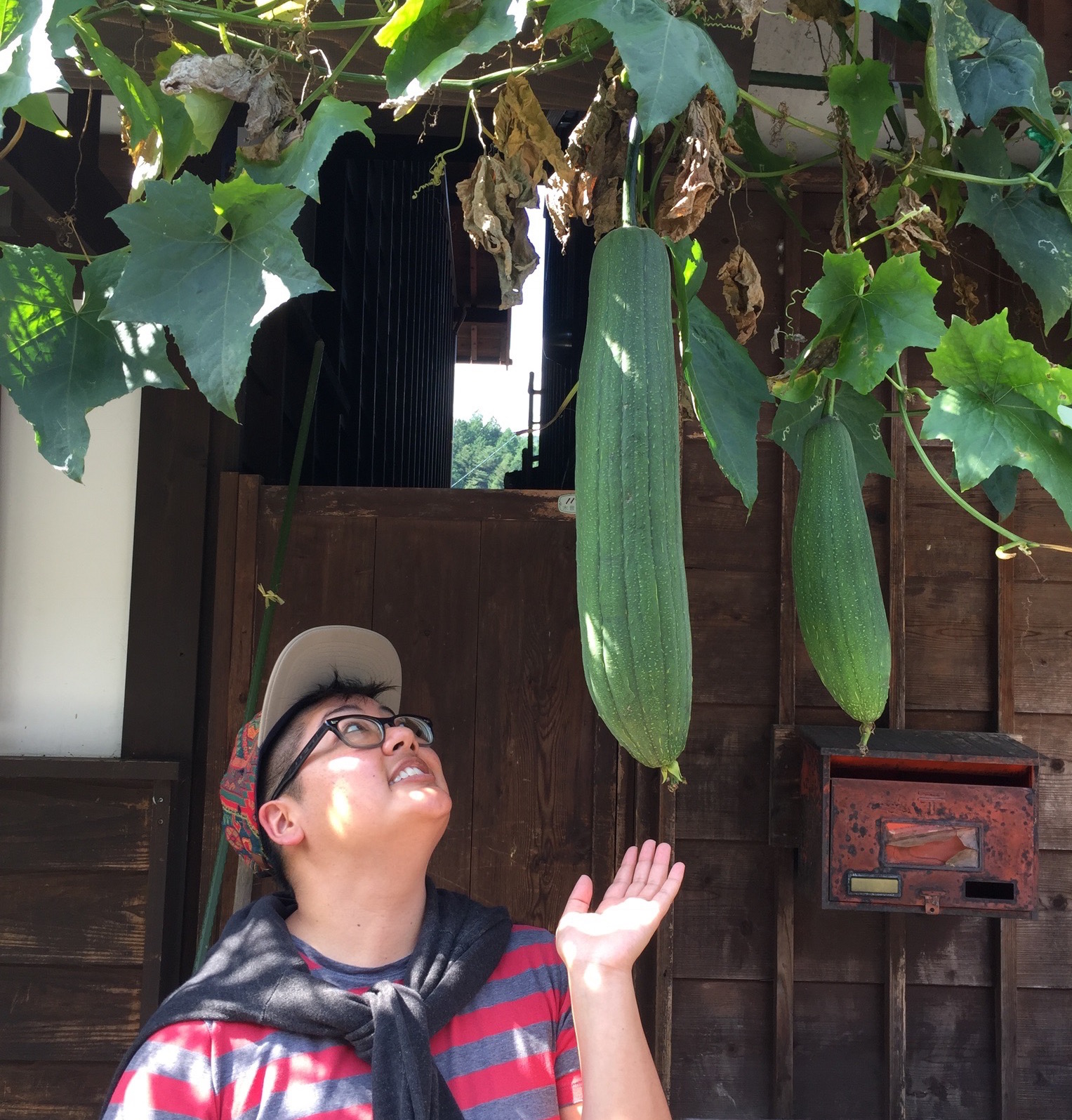
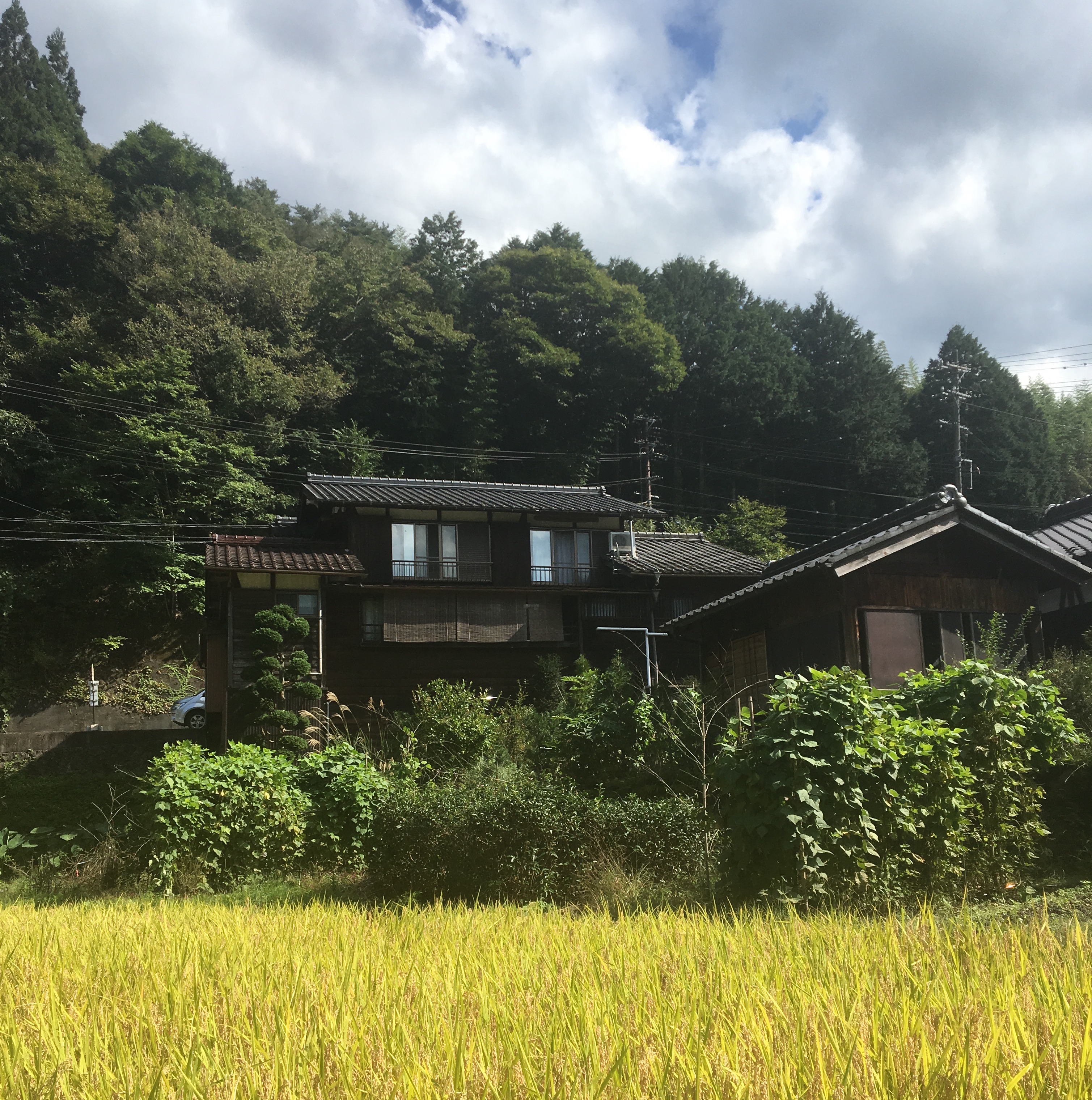
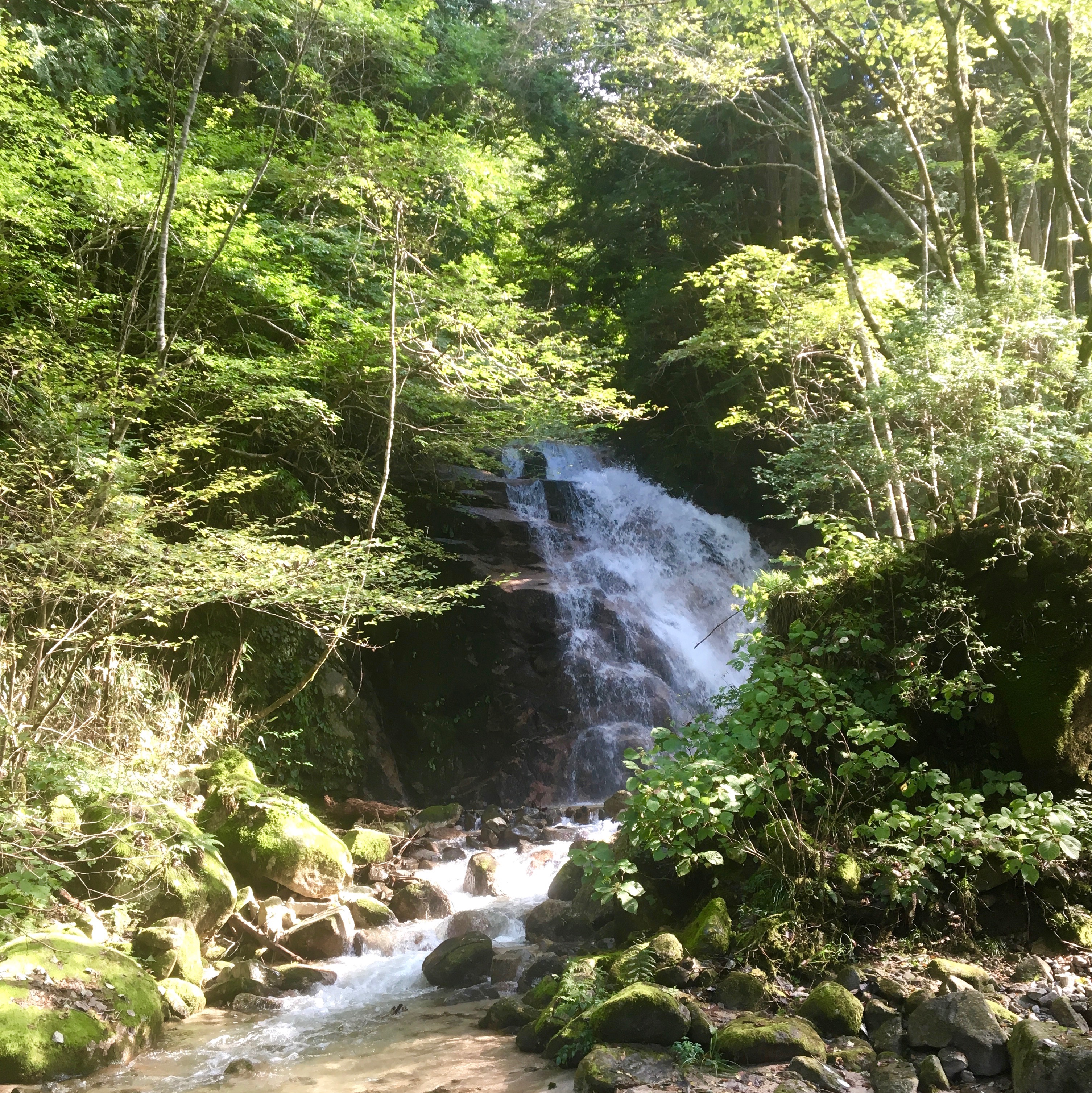
Mäneka:
I spent 13 hours on a plane, 2.5 hours in Tokyo Narita, 1 hour on another plane to Nagoya, 45 minutes on the Meitetsu limited express train, and then 20 minutes or so wandering around Nagoya station looking for the gold clock to meet Kamala, Linda, and Lori. I was very greasy by the end. At Tokyo Narita I was thoroughly searched by the customs agent and I was concerned my beef jerky would be confiscated and then I would end up like that woman I saw on National Geographic’s Locked Up Abroad who goes to Japanese prison for importing marijuana from Nepal. But he didn’t realize what the beef jerky was so I got through just fine.
I also discovered some perks of being a woman in Japan.

Kamala:
“It’s only 7 kilometers,” Lori threw out very casually at the outset. “And it’s mostly downhill.” Walking part of the Nakasendo Trail or Kisokaidō was one of the activities she most wanted to do. It’s a route from the Edo-period that allowed samurai to walk from what’s now Tokyo to Kyoto without having to cross big bodies of water, and was travelled by the famous poet Basho. The description—a walk in the countryside through old preserved Japanese towns—was incredibly appealing. Linda has fond memories from her years as an exchange student of the natural landscape outside Nagoya and up towards Nagano in the mountains. “It’s just very beautiful,” she said.
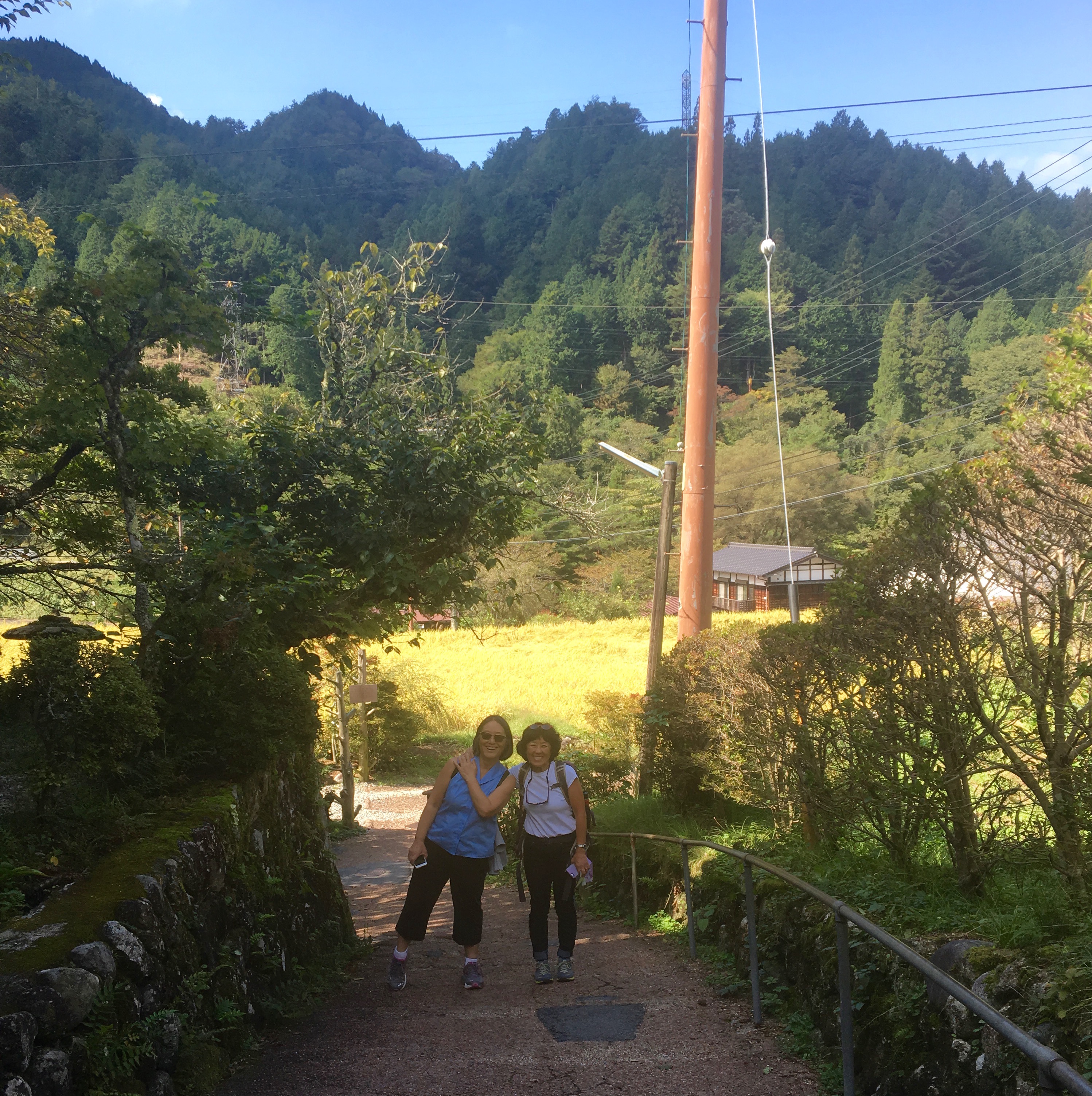
The train ride out was indeed beautiful. We passed by blue very blue rivers and big grey-green shadows of mountains hovering over little bright green squares of rice paddies. “Those,” Linda pointed out next to the rice paddies, “those are like the narrow roads where I fell in on my bike.” The roads are pretty narrow and uneven so even though I’m fairly certain that I inherited by wobbily bike affliction from my mom, it might just have been rough roads that have dumped her into a variety of rice paddies.
We arrived in Nagiso and took a taxi to Tsumago, an old town with little stream running down the whole town, that powered a wooden mill. Our driver directed us to a cute ryokan, where we sat on tatami and enjoyed fresh soba. We also tried a local specialty, a grilled mochi on stick with a sweet miso sauce, which Mom preferred as a burnt sauce on the stick.
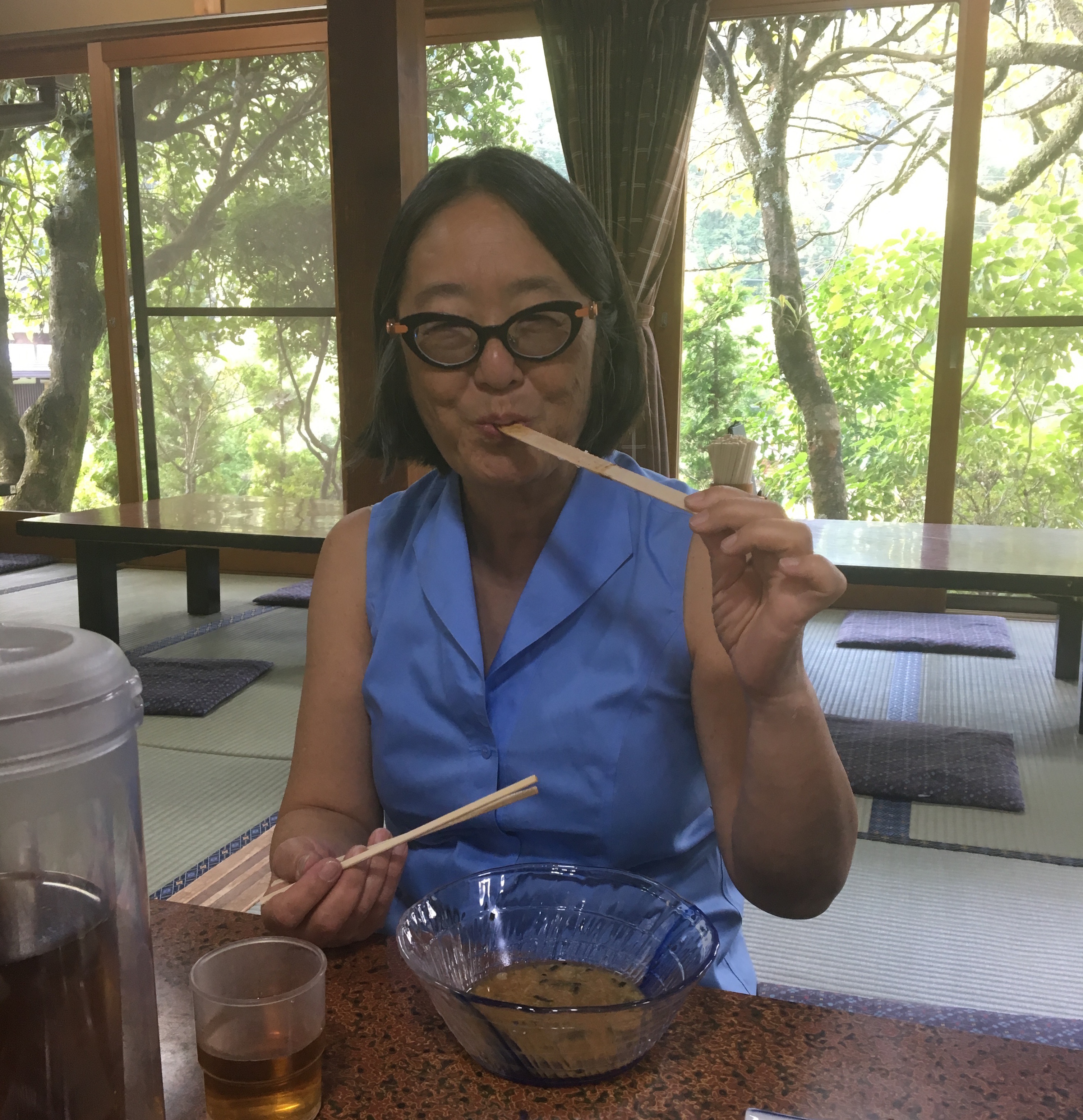
At this point, so far so good: tasty food, sunny weather, classic wooden buildings, tons of flowering plants.
Very soon, however, it became clear that we would be walking uphill for several hours, nearly 4km. And while for Lori, this was not a huge deal, for Kamala—known for requiring food bribes for every half hour of uphill walking—and Linda—known for lots of stops to closely examine plants and breathe deeply—this was quite a rigorous and straining activity.
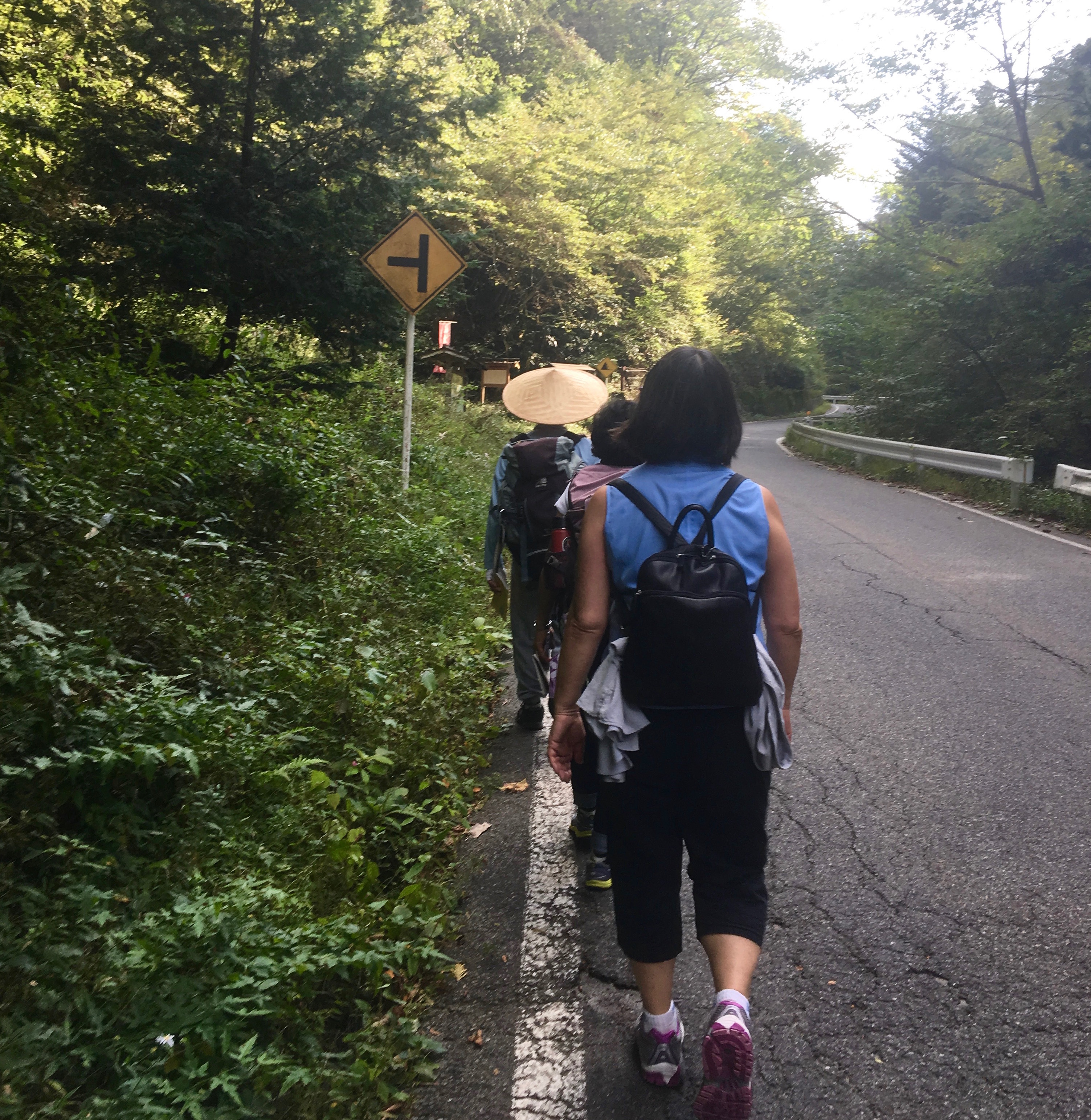
We huffed and puffed up the hills after Lori, and also met a nice man near the waterfalls who was walking the whole trail. He saved us from getting lost after a disorienting meeting with a waterfall. “I almost died,” Linda reported after the worst of the uphill was over, and we had managed to make it into Magome.
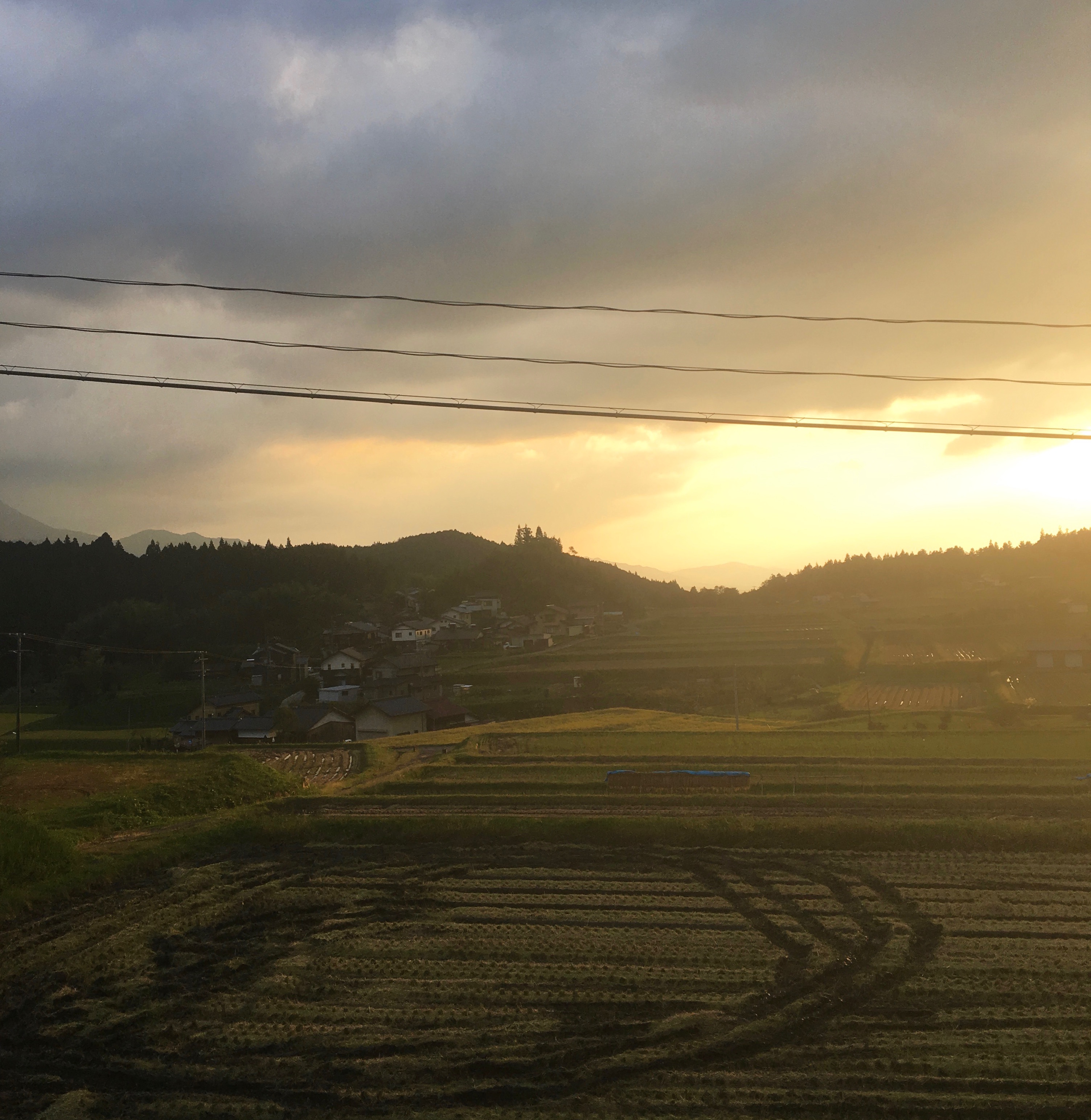
Lori
Thank you to Kamala and Mäneka for graciously taking on the responsibility of documenting our Japan epic-adventure for all of eternity. I would be remiss if I didn’t add my two cents every now and then, so here’s my first two yen.
Nakasendo trail…it was everything I had hoped to see and more. (Go-men-nasai to Linda for giving her a “near death” experience on this trip.) As we wound in and out of forests of cypress and bamboo, fields of rice ready to harvest, and water streaming through brooks and water wheels, I really hoped to see at least one bear. How did we know there were bears in them thar’ mountains? Figured if Japanese were smart enough to hang brass bells from wood huts in strategic locations and signage beseeching you to ring the brass bell as loud as possible before venturing onward, there had to be something else residing in the hills besides people. So, I clanged every bell along the way with deafening ferocity and single-handedly protected Linda and Kamala from their demise by bear encounter. They owe me their lives. You’re welcome…
More about the trail that intrigued me…the stones. Some of the trail was paved with smooth, beautifully arranged stones. Crazy to think that samurai, farmers, and weary traveler’s getta and waraji (straw sandals) had tread upon those SAME stones once upon a time. The same people placed small jizo (small stone carvings) along the way to protect travelers and cows (of all things) and the jizo continue to cast an aura of protection for 21st century trekkers like us.

It was a long journey for us all.
